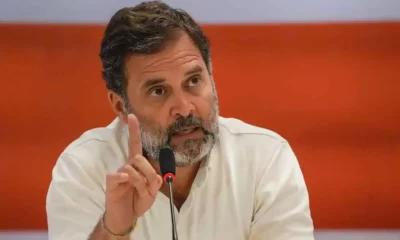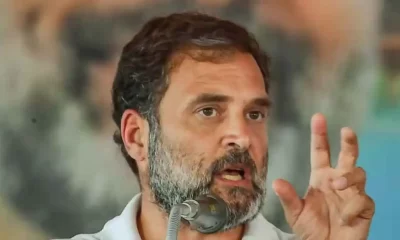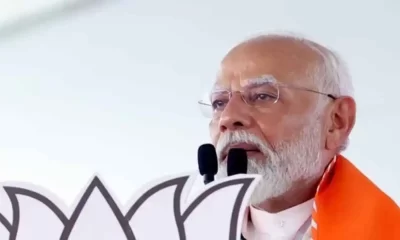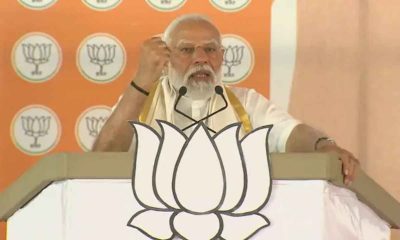India News
Economic Growth Slows Down To Lowest In Four Years, Accelerates Attacks On Modi Govt
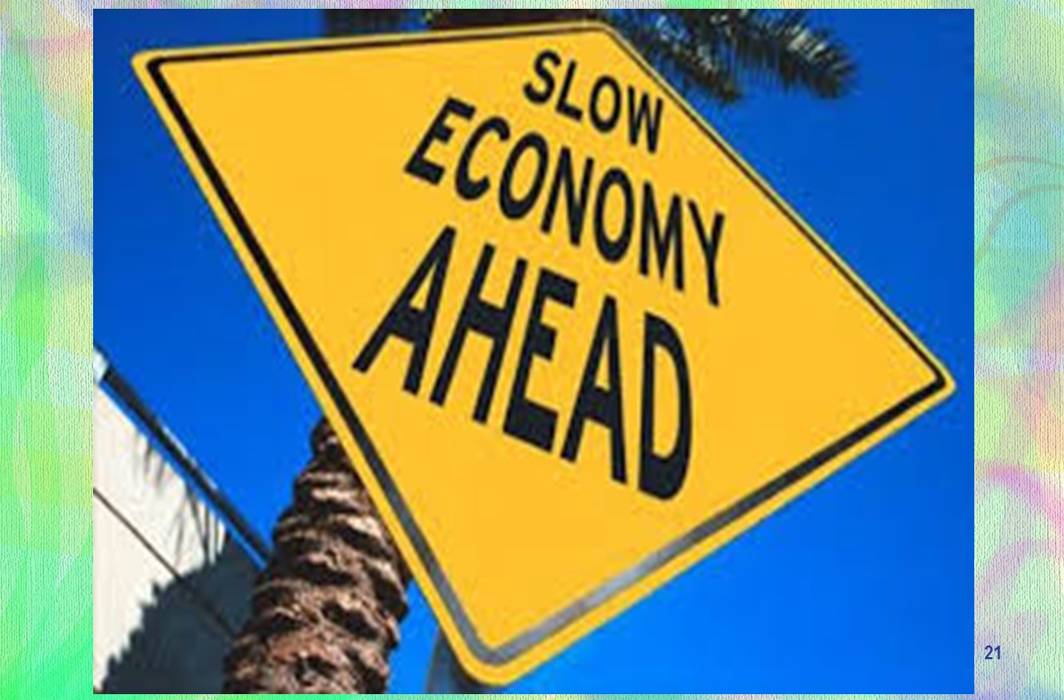
[vc_row][vc_column][vc_column_text]With the economy still struggling to return to previous levels, much less embark on the promised high growth trajectory, the Central Statistics Office (CSO) predictions of lowest GDP growth in four years invited vicious attacks on the Government from the Opposition.
On Friday, the CSO said that the country’s economy will slow down to 6.5% growth in 2017-18, lower than the year-ago period’s 7.1%. The government claimed this indicated that the economy was picking up from the 6% growth till September 2017 and would reach 7% growth rate in the second half of 2017-2018.
In a press release, the Congress party held finance minister Arun Jaitley and Prime Minister Narendra Modi responsible for “dealing a catastrophic blow to India’s growth story”. “‘Hype’, ‘Hyperbole’ and ‘Headline Management’ cannot be a substitute for grim reality on the ground,” it said.
The Congress also accused the Centre of ‘manufacturing international reports’ that talk of India’s positive economic growth. Last year, the Congress had questioned the reliability of the US-based international rating agency Moody’s upgrade of India’s sovereign rating from Baa3 to Baa2.
Senior Congress leader P Chidambaram cited GDP figures from the last three years to assert that there has been a slowdown in economy.[/vc_column_text][vc_raw_html]JTNDYmxvY2txdW90ZSUyMGNsYXNzJTNEJTIydHdpdHRlci10d2VldCUyMiUyMGRhdGEtbGFuZyUzRCUyMmVuJTIyJTNFJTNDcCUyMGxhbmclM0QlMjJlbiUyMiUyMGRpciUzRCUyMmx0ciUyMiUzRU91ciUyMGZlYXJzJTIwYW5kJTIwd2FybmluZ3MlMjBoYXZlJTIwcHJvdmVkJTIwdHJ1ZS4lMjBHRFAlMjBncm93dGglMjBpbiUyMDIwMTUtMTYlMkMlMjAyMDE2LTE3JTIwYW5kJTIwMjAxNy0xOCUyMCUyOGVzdCUyOSUyMGlzJTIwOC4wJTJDJTIwNy4xJTIwYW5kJTIwNi41LiUyMFRoZXNlJTIwbnVtYmVycyUyMHByb3ZlJTIwdGhlcmUlMjBpcyUyMGElMjBzbG93ZG93bi4lM0MlMkZwJTNFJTI2bWRhc2glM0IlMjBQLiUyMENoaWRhbWJhcmFtJTIwJTI4JTQwUENoaWRhbWJhcmFtX0lOJTI5JTIwJTNDYSUyMGhyZWYlM0QlMjJodHRwcyUzQSUyRiUyRnR3aXR0ZXIuY29tJTJGUENoaWRhbWJhcmFtX0lOJTJGc3RhdHVzJTJGOTQ5Mjk4Mzg5Mzg4MTUyODM0JTNGcmVmX3NyYyUzRHR3c3JjJTI1NUV0ZnclMjIlM0VKYW51YXJ5JTIwNSUyQyUyMDIwMTglM0MlMkZhJTNFJTNDJTJGYmxvY2txdW90ZSUzRSUwQSUzQ3NjcmlwdCUyMGFzeW5jJTIwc3JjJTNEJTIyaHR0cHMlM0ElMkYlMkZwbGF0Zm9ybS50d2l0dGVyLmNvbSUyRndpZGdldHMuanMlMjIlMjBjaGFyc2V0JTNEJTIydXRmLTglMjIlM0UlM0MlMkZzY3JpcHQlM0UlMEE=[/vc_raw_html][vc_column_text]Congress President Rahul Gandhi blamed PM Narendra Modi’s “divisive politics” and Finance Minister Arun Jaitley’s “genius” for the bleak GDP forecast.
A day after estimates predicted a four-year-low growth of 6.5%, Gandhi took a jibe at Modi and Jaitley, saying that the fresh investment in the economy was at a 13-year low, bank credit growth at 63-year low, job creation at 8-year low, agriculture gross value added (GVA) at 1.7 per cent while fiscal deficit was heading for an 8-year high and projects were being stalled under the Modi government.[/vc_column_text][vc_raw_html]JTNDYmxvY2txdW90ZSUyMGNsYXNzJTNEJTIydHdpdHRlci10d2VldCUyMiUyMGRhdGEtbGFuZyUzRCUyMmVuJTIyJTNFJTNDcCUyMGxhbmclM0QlMjJlbiUyMiUyMGRpciUzRCUyMmx0ciUyMiUzRUZNJTIwSmFpdGxleSVFMiU4MCU5OXMlMjBnZW5pdXMlMjBjb21iaW5lcyUyMHdpdGglMjBNciUyME1vZGklRTIlODAlOTlzJTIwR3Jvc3MlMjBEaXZpc2l2ZSUyMFBvbGl0aWNzJTIwJTI4R0RQJTI5JTIwdG8lMjBnaXZlJTIwSW5kaWElM0ElM0NiciUzRSUzQ2JyJTNFTmV3JTIwSW52ZXN0bWVudHMlM0ElMjAxMyUyMHllYXIlMjAlRTIlQUMlODclM0NiciUzRUJhbmslMjBjcmVkaXQlMjBHcm93dGglM0ElMjA2MyUyMHllYXIlMjAlRTIlQUMlODclM0NiciUzRUpvYiUyMGNyZWF0aW9uJTNBJTIwOCUyMHllYXIlMjAlRTIlQUMlODclM0NiciUzRUFncmljdWx0dXJlJTIwR1ZBJTIwZ3Jvd3RoJTNBJTIwMS43JTI1JUUyJUFDJTg3JTNDYnIlM0VGaXNjYWwlMjBEZWZpY2l0JTNBJTIwOCUyMHllYXIlRjAlOUYlOTQlQkElM0NiciUzRVN0YWxsZWQlMjBQcm9qZWN0cyUyMCVGMCU5RiU5NCVCQSUzQ2ElMjBocmVmJTNEJTIyaHR0cHMlM0ElMkYlMkZ0LmNvJTJGYlpkUG5SRVlpRSUyMiUzRWh0dHBzJTNBJTJGJTJGdC5jbyUyRmJaZFBuUkVZaUUlM0MlMkZhJTNFJTNDJTJGcCUzRSUyNm1kYXNoJTNCJTIwT2ZmaWNlJTIwb2YlMjBSRyUyMCUyOCU0ME9mZmljZU9mUkclMjklMjAlM0NhJTIwaHJlZiUzRCUyMmh0dHBzJTNBJTJGJTJGdHdpdHRlci5jb20lMkZPZmZpY2VPZlJHJTJGc3RhdHVzJTJGOTQ5NDc5NzMzODUwMzM3MjgwJTNGcmVmX3NyYyUzRHR3c3JjJTI1NUV0ZnclMjIlM0VKYW51YXJ5JTIwNiUyQyUyMDIwMTglM0MlMkZhJTNFJTNDJTJGYmxvY2txdW90ZSUzRSUwQSUzQ3NjcmlwdCUyMGFzeW5jJTIwc3JjJTNEJTIyaHR0cHMlM0ElMkYlMkZwbGF0Zm9ybS50d2l0dGVyLmNvbSUyRndpZGdldHMuanMlMjIlMjBjaGFyc2V0JTNEJTIydXRmLTglMjIlM0UlM0MlMkZzY3JpcHQlM0UlMEE=[/vc_raw_html][vc_column_text]The ‘gross divisive politics’ for GDP was Rahul Gandhi’s latest jibe after ‘Gabbar Singh Tax’ for GST, ‘Fake in India’ for Make in India campaign and ‘Suit Boot ki Sarkar’ referring to PM Modi’s monogrammed suit during then US President Barack Obama’s India visit.
Congress spokesperson Randeep Surjewala followed it up, tweeting: “Modinomics + Jaitlinomics = Declining Economy.” Surjewala said that agriculture, industry, private consumption and government expenditure, all have recorded declining growth rate in 2017-18 compared to 2016-17 while fiscal deficit went up in the ongoing financial year.[/vc_column_text][vc_raw_html]JTNDYmxvY2txdW90ZSUyMGNsYXNzJTNEJTIydHdpdHRlci10d2VldCUyMiUyMGRhdGEtbGFuZyUzRCUyMmVuJTIyJTNFJTNDcCUyMGxhbmclM0QlMjJlbiUyMiUyMGRpciUzRCUyMmx0ciUyMiUzRU1vZGlub21pY3MlMkJKYWl0bGlub21pY3MlM0QlM0NiciUzRSUyMCUyMCUyMCUyMCVFMiVBNCVCNSVFRiVCOCU4RkVjb25vbXklM0NiciUzRSUzQ2JyJTNFMjAxNC0xNSUyMHRvJTIwMjAxNy0xOCUzQ2JyJTNFR0RQLTcuNSUyNSUyMHRvJTIwNi41JTI1JUUyJUE0JUI1JUVGJUI4JThGJTNDYnIlM0UlM0NiciUzRTIwMTYtMTclMjB0byUyMDIwMTctMTglM0NiciUzRTElMjBBZ3JpY3VsdHVyZSUyMEdWQSUyMC00LjklMjUlMjB0byUyMDEuNyUyNSVFMiVBNCVCNSVFRiVCOCU4RiUzQ2JyJTNFMiUyMEluZHVzdHJ5LTUuNiUyNSUyMHRvJTIwNC40JTI1JUUyJUE0JUI1JUVGJUI4JThGJTNDYnIlM0UzJTIwUHZ0JTIwQ29uc3VtcHRpb24tOC43JTI1JTIwdG8lMjA2LjMlMjUlRTIlQTQlQjUlRUYlQjglOEYlM0NiciUzRTQlMjBHb3Z0JTIwRXhwLi0yMC44JTI1JTIwdG8lMjA4LjUlMjUlRTIlQTQlQjUlRUYlQjglOEYlM0NiciUzRSUzQ2JyJTNFRmlzY2FsJTIwRGVmaWNpdCVFMiVBQyU4NiVFRiVCOCU4RiUzQ2JyJTNFJTNDYnIlM0VSZWFsaXR5JTIwViUyRlMlMjBSaGV0b3JpYyUyMSUzQyUyRnAlM0UlMjZtZGFzaCUzQiUyMFJhbmRlZXAlMjBTJTIwU3VyamV3YWxhJTIwJTI4JTQwcnNzdXJqZXdhbGElMjklMjAlM0NhJTIwaHJlZiUzRCUyMmh0dHBzJTNBJTJGJTJGdHdpdHRlci5jb20lMkZyc3N1cmpld2FsYSUyRnN0YXR1cyUyRjk0OTQ4NDk4MjQzMDQ1Nzg1NiUzRnJlZl9zcmMlM0R0d3NyYyUyNTVFdGZ3JTIyJTNFSmFudWFyeSUyMDYlMkMlMjAyMDE4JTNDJTJGYSUzRSUzQyUyRmJsb2NrcXVvdGUlM0UlMEElM0NzY3JpcHQlMjBhc3luYyUyMHNyYyUzRCUyMmh0dHBzJTNBJTJGJTJGcGxhdGZvcm0udHdpdHRlci5jb20lMkZ3aWRnZXRzLmpzJTIyJTIwY2hhcnNldCUzRCUyMnV0Zi04JTIyJTNFJTNDJTJGc2NyaXB0JTNFJTBB[/vc_raw_html][vc_column_text]CPM, which called the government’s economic policies jumlanomics”. The CPM, too, was talking about what it believes is hyperbole on the part of the Narendra Modi government.
CPM leader Sitaram Yechury said that social harmony and amity are a prerequisite for economic growth.
“Social harmony and amity are a prerequisite for economic progress too. You can’t polarise a society and spread hate while seeking votes and hope for high economic growth,” he said in a tweet.
“Will Modi answer or will it be met with his usual tactic of going silent on issues that really matter? #Jumlanomics,” he said in another tweet.
The CSO forecast
GDP: The CSO said that the GDP growth rate was expected to slow to a four-year low of 6.5 per cent in 2017-18, the slowest in the four years since the Narendra Modi government took office mainly due to poor performance of agriculture and manufacturing sectors as economic activity was hit by the twin blows of demonetisation and implementation-related issues of the goods and services tax (GST).
The forecast shows economic growth slowing to 6.5% in the year to 31 March from 7.1% in the previous year, but it assumes that the economy is on a recovery path. The economy grew at 6% in the six months ended 30 September, indicating that it will accelerate to 7% in the second half ending 31 March, if the forecast proves true.
“GDP growth of 6.5% for 2017-18 implies growth of 7% for the second half. Confirms strong turnaround of the economy,” economic affairs secretary Subhash Chandra Garg said in a post on Twitter.
Nominal GDP, or gross domestic product at market prices, is expected to grow at 9.5%, slower than the 11.75% growth assumed in the 2017-18 budget. Nominal GDP will be used as the benchmark for most indices such as fiscal deficit in Union Budget 2018, to be presented by finance minister Arun Jaitley on 1 February.
Fiscal deficit: TCA Anant, chief statistician of India, said the lower-than-anticipated nominal GDP growth will lead to “marginal slippage” in the fiscal deficit target for 2017-18 — from 3.24% of GDP estimated in the budget to 3.29% — assuming the government borrows what it budgeted for the year.
Media reports said that since the government has increased its spending through supplementary demands for grants and has communicated that it may borrow Rs 50,000 crore more by 31 March, the actual fiscal slippage could be more. This would also jeopardise finance minister’s target of bringing down the fiscal deficit to 3% of GDP by 2018-19.
Agriculture: The pace of agricultural expansion is expected to fall by more than half (from 4.9 per cent in the previous year to 2.1 per cent in FY18) due to decline in kharif output year-on-year. The data also showed massive rural distress as the agricultural output inflation rate (measured by GDP deflators) is expected to fall to 0.7 per cent against 4.1 per cent over this period, a development that may set the direction for the Budget, which is less than a month away.
Manufacturing: Manufacturing is likely to decelerate sharply to grow at 4.6%, compared with 7.9% a year ago. While demonetization of high-value banknotes in November 2016 was expected to have disrupted supply chains in the informal economy, the complex filing procedures of GST and delay in refund of input credits may have impacted exporters and small and medium enterprises, forcing companies to pare production and stocks, leading to a decline in manufacturing activity.
Gross Value Added: The GVA growth is expected to fall to 6.1%, much lower than the 6.7% growth projected by Reserve Bank of India in its latest bi-monthly monetary policy review on 6 December. (GVA growth is a measure of economic growth which takes out the impact of subsidies and indirect taxes.)
Private consumption: While growth in private consumption is expected to slow to 6.3% in FY18, investment demand growth is estimated to quicken to 4.5% during the same year.
Public expenditure, which was the driver of economic growth in the previous year, is likely to slow to 9.4% against 11.3% a year ago.
Electricity and trade & hotels sectors are the only ones that are expected to grow at a faster pace in FY18 compared with the previous financial year, at 7.5% and 8.7% respectively.
Tax revenue: The GST impacted net taxes and these are projected to grow only 10.9 per cent in the current financial year against 12.8 per cent in the previous year. The GST Council had cut rates for over 200 items in October and November, which might impact collections.
Investment: Investment seems to be reviving a bit with gross fixed capital formation forecast to rise by 4.5 per cent against 2.4 per cent.
Services: Growth in government-backed public administration, defence and others is pegged to fall by 9.4 per cent against 11.3 per cent in the previous year. Media reports said this means the government is controlling its expenditure to rein in the fiscal deficit, which has crossed the Budget Estimates by November itself. This dimension was also shown by government final consumption expenditure, which is projected to fall by more than half.
The other two segments of services, including financial services, are to grow higher. However, none of the segments is projected to grow in double digits in the financial year. The same was the case in the previous year, barring government-supported services, according to media reports.
GDP growth is projected to accelerate to 7 per cent in the second half of the current financial year from 6 per cent in the first half. It had grown 5.7 per cent in the first three months of the current financial year and 6.3 per cent in the second quarter.[/vc_column_text][/vc_column][/vc_row]
2024 Lok Sabha Elections
Lok Sabha election 2024: Nearly 50% voter turnout recorded in second phase till 3 pm
The constituencies going to polls today include all 20 Lok Sabha seats in Kerala, 14 in Karnataka, 13 in Rajasthan, and others spread across different states.
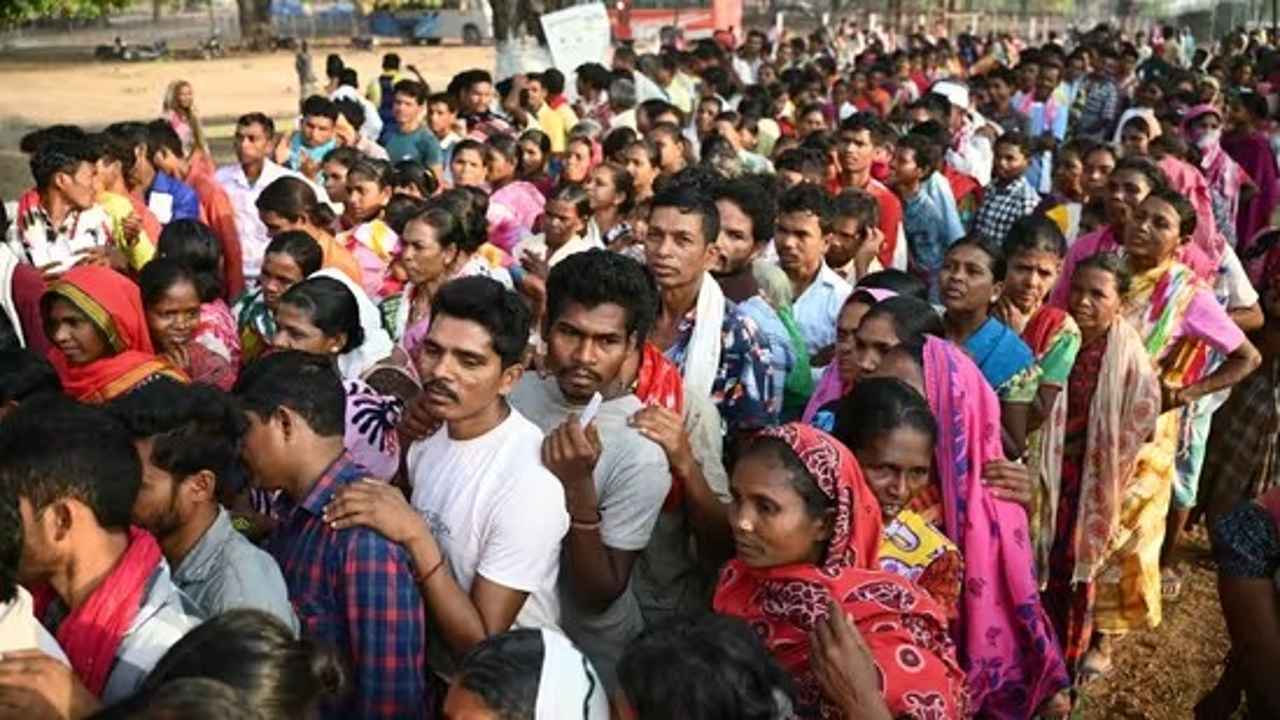
In the second phase of Lok Sabha elections 2024, over 50% of voters were registered in 13 states and the UTs till 3 p.m. 65% of voters participated in the first round of the Lok Sabha elections.
The 18th Lok Sabha elections are currently in their second phase, with voting for 88 seats taking place across 13 states and union territories. There are more than 1,200 people running for office, four of them are from outside Manipur.
Union minister Rajeev Chandrasekhar, BJP members Tejasvi Surya, Hema Malini, and Arun Govil, Rahul Gandhi and Congress leader Shashi Tharoor, DK Suresh, the brother of Karnataka Deputy Chief Minister DK Shivakumar, and former chief minister HD Kumaraswamy are among the notable contenders for the second phase.
In 2019, the NDA had won 56 of the 89 seats and the UPA 24. Six of these seats have been redrawn as part of the delimitation exercise.
The first phase of the seven stages of the elections took place on Friday, including 102 seats spread across 21 states and Union territories. Voter turnout was about 65.5% in the first phase, according to the reports.
In biggest festival of democracy, people from all walks of sector took part in it. A video went viral where former India captain and current Indian team head coach Rahul Dravid and former India player and head coach Anil Kumble were seen standing in line to cast their vote.
Meanwhile, voting started at 7 a.m. and will end at 6 p.m. The Election Commission has extended voting hours for those who are in line by an hour. According to Election Commission figures, the first two hours saw a 9.3% voter turnout throughout the 88 constituencies. By 9 am, Kerala had recorded 8.52%, Karnataka 9.21%, and Madhya Pradesh 13.82%.
In this phase, there were about 15.88 crore eligible voters, comprising 5.929 third-gender electors, 8.08 crore males, and 7.8 crore women. 3.28 crore young voters, aged 20 to 29, are among them; 34.8 lakh of them are first-time voters.
2024 Lok Sabha Elections
Lok Sabha elections 2024: 102-year-old man walks to polling booth to cast his vote in Jammu
The lowest voter turnout so far was noted in Ramgarh at 1.53%.
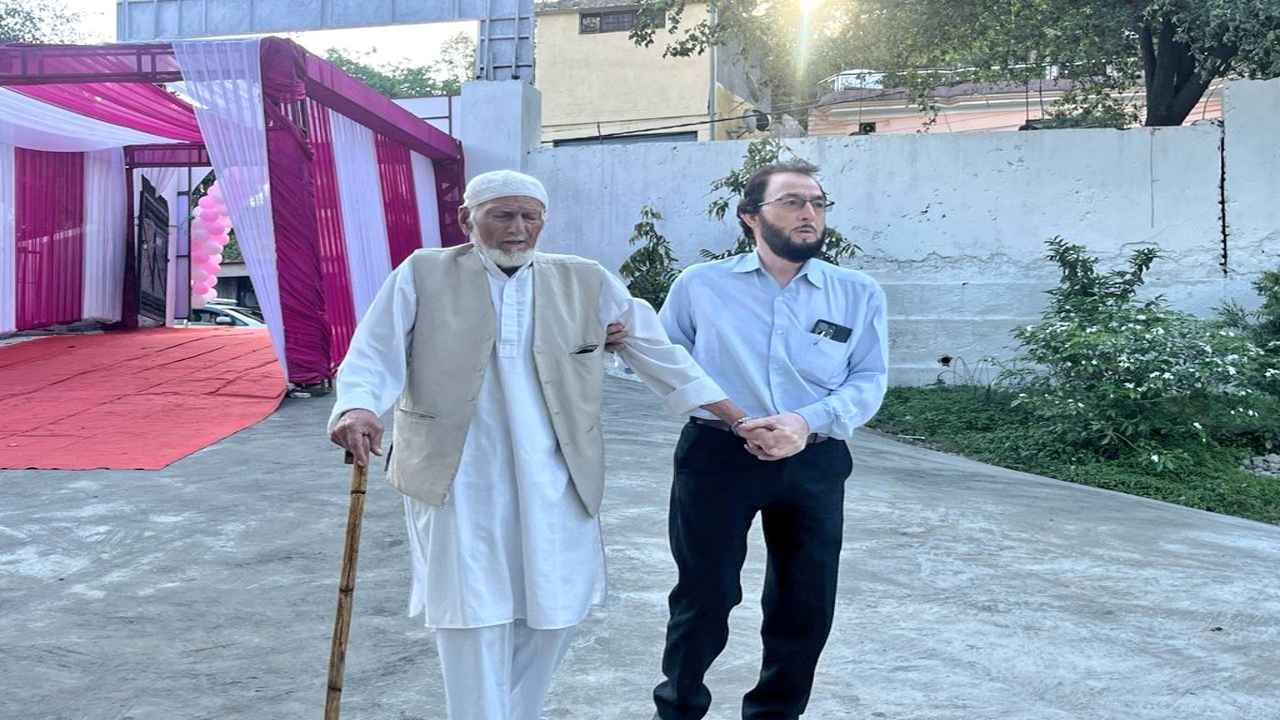
A 102-year-old man showed up at a Jammu polling place to cast his vote in the second phase of the Lok Sabha elections on Friday. Haji Karam Din arrived at the Reasi district polling place in the Jammu constituency with a walking stick in hand and a family member who assisted him with the pre-voting process.
Haji Karam Din, who is 102-year-old, showed his inked finger and posed for pictures outside the polling booth after casting his vote. He said voting at this polling place at this age makes him very happy. He has always cast his vote. Even at the age of 102, this experience is still ongoing, he said.
Reasi district is a part of the Jammu parliamentary constituency, and 22 candidates are up for vote with around 17.81 lakh eligible voters.
BJP’s sitting member Jugal Kishore Sharma is aiming for a third term in office following wins in the elections of 2014 and 2019. Former minister and Congress candidate Raman Bhalla is his main opponent.
Voting in the Jammu-Reasi Lok Sabha constituency began with eager voters showing up at the polling places. Some of them were wearing traditional Dogra attire.
In 2,416 polling places around the constituency, voting got underway at 7 a.m., and 10.39% of the total votes were cast by 9 a.m. In the 2019 Lok Sabha elections, Jammu recorded a 74% voter turnout.
Following the repeal of Article 370 and the division of the former state into two Union Territories five years ago, this is Jammu’s first significant election.
The Akhnoor segment received the highest percentage of votes, 14.24%, followed by Reasi (14.13%), Gulabgarh (13.53%), Shri Mata Vaishnodevi (12.71%), Marh (12.31%), Samba (8.56%), R S Pura Jammu South (8.17%), and Suchetgarh (5.67%), according to the officials. Ramgarh recorded the lowest voter participation of 1.53% so far.
Low attendance was observed in the border areas of the districts of Jammu and Samba till nine in the morning, according to poll data.
The officials said that big lines of voters were observed at several polling places throughout Jammu city. Voters were observed heading towards polling places early in the morning.
India News
Salman Khan house firing case: NIA interrogates arrested shooters Sagar Pal, Vicky Gupta for three hours
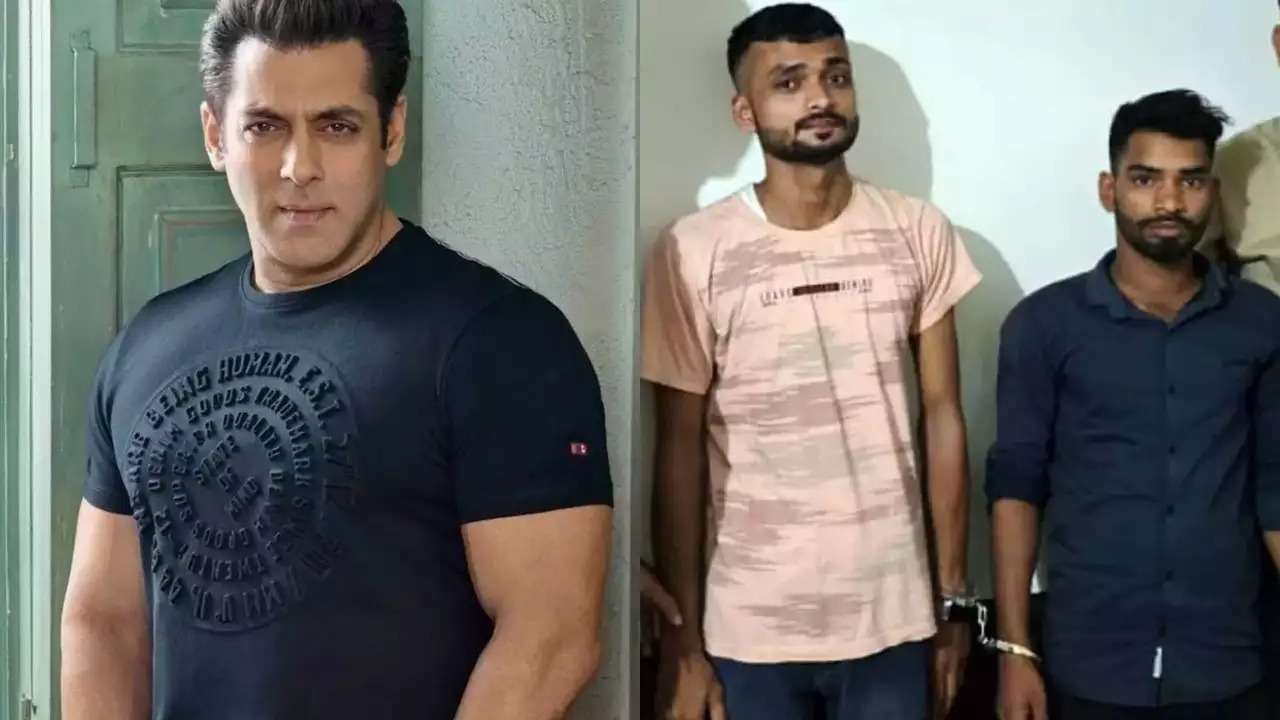
The investigation into the shocking firing incident that took place outside Salman Khan’s house on April 14 keeps bringing new updates with every passing day. In this case, Sagar Pal and Vicky Gupta, the two suspected shooters, have already been taken into custody.
The two shooters have reportedly been questioned by the National Investigation Agency (NIA), according to a new development. Every day that goes by, more information is revealed about the inquiry into the shocking firing incident that happened outside Salman Khan’s house on April 14. Sagar Pal and Vicky Gupta, the two accused shooters, are being held in custody after their first arrests.
It was recently discovered that the two shooters were questioned by the National Investigation Agency (NIA).
NIA has reportedly begun questioning Sagar Pal and Vicky Gupta, who were detained a few days ago for firing openly outside Salman Khan’s Galaxy Apartments in Mumbai, according to a recent update posted on their X (Twitter) account. NIA has interrogated shooters Vicky Gupta and Sagar Pal, arrested in the firing case, the tweet said.
According to the reports, two Punjabi residents were taken into custody by the Mumbai Crime Branch yesterday on suspicion of being involved in the recent shooting incident outside the house of Bollywood actor Salman Khan.
The two men, Sonu Subhash Chander and Anuj Thapan, provided guns to Sagar Pal and Vicky Gupta, the shooters, according to information released by the Mumbai Crime Branch. It was also reported that they had communication with the Bishnoi gang. For those who don’t know, hours after the incident, Anmol Bishnoi, the brother of gangster Lawrence Bishnoi, allegedly took credit for the firing in a Facebook post.
The shooters’ custody has been extended by Mumbai’s Esplanade Court until April 29.
Meanwhile, on the workfront Salman Khan was last seen in Tiger 3 alongside Katrina Kaif.
-
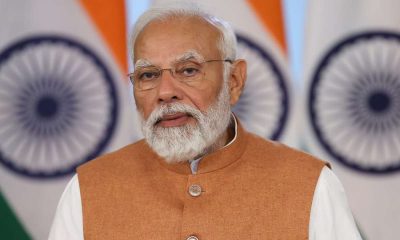
 2024 Lok Sabha Elections11 hours ago
2024 Lok Sabha Elections11 hours agoPM Modi calls for high voter turnout in second phase of Lok Sabha elections 2024, says your vote is your voice
-
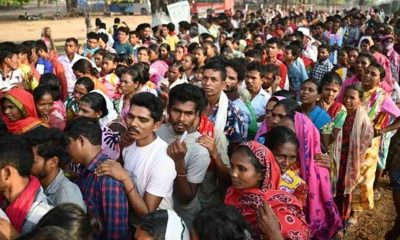
 2024 Lok Sabha Elections6 hours ago
2024 Lok Sabha Elections6 hours agoLok Sabha election 2024: Nearly 50% voter turnout recorded in second phase till 3 pm
-
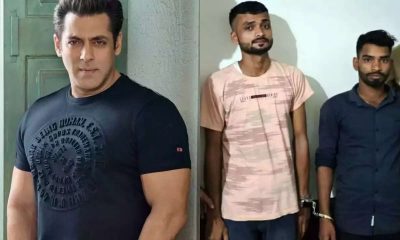
 India News10 hours ago
India News10 hours agoSalman Khan house firing case: NIA interrogates arrested shooters Sagar Pal, Vicky Gupta for three hours
-
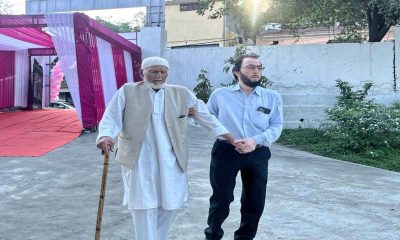
 2024 Lok Sabha Elections9 hours ago
2024 Lok Sabha Elections9 hours agoLok Sabha elections 2024: 102-year-old man walks to polling booth to cast his vote in Jammu
-
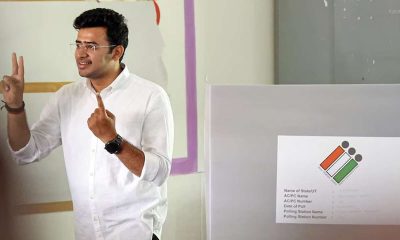
 2024 Lok Sabha Elections4 hours ago
2024 Lok Sabha Elections4 hours agoElection Commission books BJP MP Tejasvi Surya for seeking votes in the name of religion

